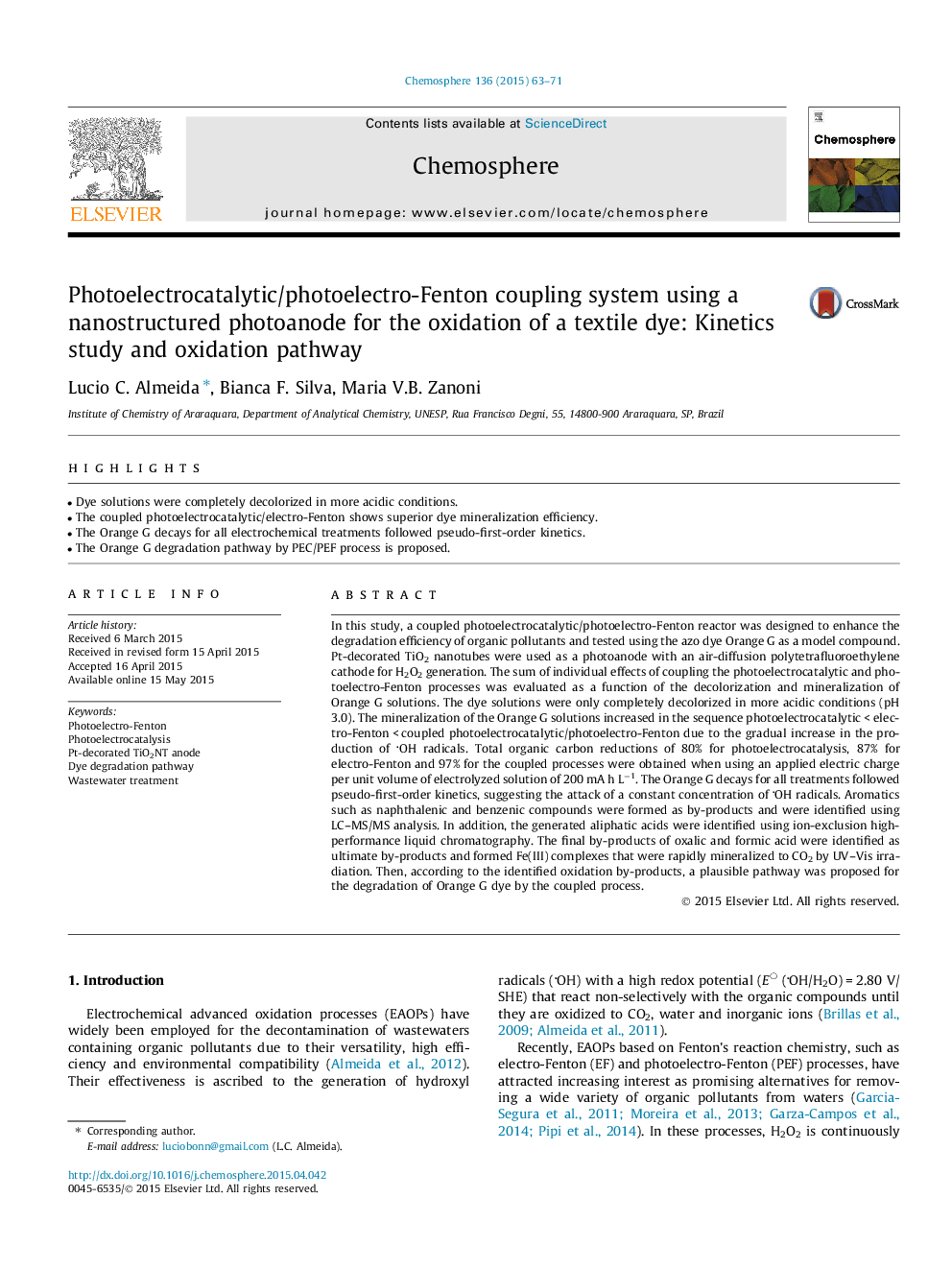| کد مقاله | کد نشریه | سال انتشار | مقاله انگلیسی | نسخه تمام متن |
|---|---|---|---|---|
| 4408257 | 1618835 | 2015 | 9 صفحه PDF | دانلود رایگان |

• Dye solutions were completely decolorized in more acidic conditions.
• The coupled photoelectrocatalytic/electro-Fenton shows superior dye mineralization efficiency.
• The Orange G decays for all electrochemical treatments followed pseudo-first-order kinetics.
• The Orange G degradation pathway by PEC/PEF process is proposed.
In this study, a coupled photoelectrocatalytic/photoelectro-Fenton reactor was designed to enhance the degradation efficiency of organic pollutants and tested using the azo dye Orange G as a model compound. Pt-decorated TiO2 nanotubes were used as a photoanode with an air-diffusion polytetrafluoroethylene cathode for H2O2 generation. The sum of individual effects of coupling the photoelectrocatalytic and photoelectro-Fenton processes was evaluated as a function of the decolorization and mineralization of Orange G solutions. The dye solutions were only completely decolorized in more acidic conditions (pH 3.0). The mineralization of the Orange G solutions increased in the sequence photoelectrocatalytic < electro-Fenton < coupled photoelectrocatalytic/photoelectro-Fenton due to the gradual increase in the production of OH radicals. Total organic carbon reductions of 80% for photoelectrocatalysis, 87% for electro-Fenton and 97% for the coupled processes were obtained when using an applied electric charge per unit volume of electrolyzed solution of 200 mA h L−1. The Orange G decays for all treatments followed pseudo-first-order kinetics, suggesting the attack of a constant concentration of OH radicals. Aromatics such as naphthalenic and benzenic compounds were formed as by-products and were identified using LC–MS/MS analysis. In addition, the generated aliphatic acids were identified using ion-exclusion high-performance liquid chromatography. The final by-products of oxalic and formic acid were identified as ultimate by-products and formed Fe(III) complexes that were rapidly mineralized to CO2 by UV–Vis irradiation. Then, according to the identified oxidation by-products, a plausible pathway was proposed for the degradation of Orange G dye by the coupled process.
Journal: Chemosphere - Volume 136, October 2015, Pages 63–71